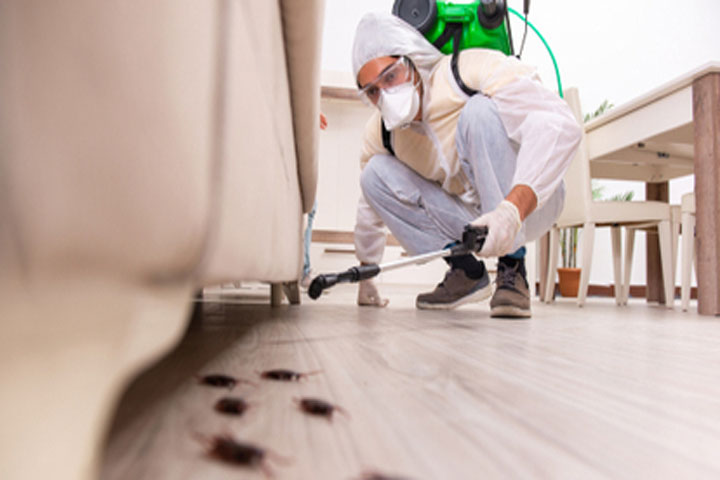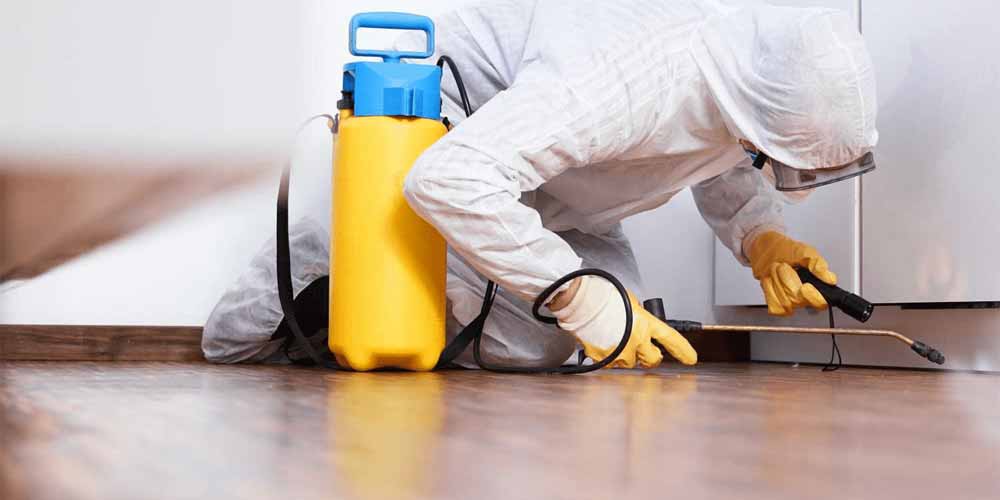Pest control services are an essential component of a successful pest management program. When pests become established in any environment, they can cause significant damage to property and health hazards for people. It is, therefore, important that competent professionals provide effective pest control services to eliminate potential problems before they arise or worsen. This article will discuss the different types of pest control services available and how best to select them for maximum effectiveness and minimum cost.
Proper identification of the target species is key when selecting appropriate pest control services. Different categories of pests require different methods of treatment depending on their biology and behavior. For example, insects may be managed with insecticides, while vertebrate pests such as rodents may need trapping or exclusion techniques. Knowing which species are present allows for the proper selection of suitable treatments based on the most current information about efficacy and safety standards.
It is also important to consider other factors when choosing pest control services, such as location, size of the infestation, desired outcome, environmental constraints, legal limitations, and budget considerations. By carefully weighing these variables against one another, it becomes possible to design a comprehensive plan tailored specifically to each situation’s needs. With this approach, it is possible to protect both human health and property from potential damages caused by pest infestations without wasting resources or posing undue risks through inappropriate application strategies.
Types Of Pests
Pest control services are essential for managing the presence of pests in residential, commercial, and industrial buildings. Pests can cause a variety of issues that range from health risks to structural damage. It is important to understand the various types of pests in order to effectively identify and manage them.
The most common types of pests found in both indoor and outdoor environments include insects, rodents, birds, and arachnids. Insects such as fleas, cockroaches, ants, flies, and moths may be present inside or outside a building, depending on their food sources. Rodents like rats, mice, and squirrels also enter buildings looking for food or shelter. Birds like pigeons often nest near structures due to the availability of nesting material, while spiders or other arachnids may wander indoors seeking prey items or hiding spots. While some pest species prefer warmer climates, others thrive in cooler areas; identifying the type of pest infestation will help determine where they might be located within the building’s structure.
Effective pest management requires an understanding not only of the different types of pests but also of how they interact with humans and our environment. Knowing which species are likely to inhabit certain areas helps create strategies designed to reduce or eliminate their presence around people’s homes, businesses, or places of work.
Warning Signs Of Infestation
As the variety of pests can differ, so can the warning signs that indicate an infestation. It is important to identify these signals in order to take appropriate and timely measures for pest control. Common indicators include a sighting of physical insects or droppings; gnawing marks on wood, plastic, or fabric items; the presence of webs, nests, and burrows; odors from insect secretions or dead rodents; and hearing noises coming from walls and floors.
Determining the type of pest plaguing a property can be difficult without proper knowledge. Furthermore, some pests remain hidden until their population grows large enough to cause visible damage. Therefore, it is recommended that homeowners contact a professional pest management company if any suspicious activity arises on the premises. A specialized team will conduct accurate inspections using advanced equipment to locate potential breeding grounds before conducting treatment procedures specific to each situation.
Benefits Of Professional Services
Professional pest control services provide a variety of benefits. The most important benefit is the elimination of existing infestations and reducing the chances of future ones. Professional exterminators have access to superior products, techniques, and technologies that are not available to homeowners or do-it-yourselfers. These professionals also understand how pests interact with their environment in order to create customized treatments for maximum effectiveness.
By using professional pest control services, it can be possible to reduce health risks associated with certain pests by eliminating them from your home or business. Pests such as cockroaches, fleas, and rodents carry diseases that can cause serious illnesses if left untreated. Additionally, some pests can damage property; for example, termites feed on wood structures, causing extensive structural damage if not addressed promptly. Professional services offer treatment plans designed to completely eradicate these undesirable intruders and help protect against further invasions.
Methods Of Pest Control
Pest control services utilize numerous methods to eliminate or reduce pest populations. The most effective method depends on the type of pests infesting a property, as well as the size and scope of the infestation. Many pest control professionals use integrated pest management (IPM) strategies that combine several different approaches for maximum results.
Common methods used in IPM include exclusion measures, such as sealing cracks and crevices where pests may enter; sanitation practices like removing potential food sources; mechanical traps and barriers; and chemical treatments with insecticides, herbicides, or rodenticides. In some cases, biological controls are also employed through the release of natural predators into problem areas.
Regardless of which techniques are used, proper training is essential to ensure safe application and prevent any harm to humans or wildlife. Experienced technicians will assess individual needs and tailor their approach accordingly for optimal pest eradication with minimal environmental impact.
Potential Hazards
When dealing with pest control services, one must consider potential hazards that can occur from the use of chemical and non-chemical treatments. When chemicals are used as part of a pest control solution, there is always a risk that these substances may have an adverse effect on humans or animals in the environment where they are being applied. Additionally, improper application of pesticides can result in pesticide drift or runoff into nearby waterways, potentially causing harm to wildlife and aquatic ecosystems.
Non-chemical solutions such as traps and baits also pose their own risks when not handled correctly. Improper placement of traps can lead to unintended consequences like trapping beneficial species or even pets. Baits should be kept out of reach of children, pets, and other non-target organisms that could be affected by accidental ingestion. It is important for those using any form of pest control service to understand how to properly handle and apply whatever method they choose so as to avoid unwanted hazardous situations.
Prevention Strategies
Having discussed the potential hazards posed by pests, it is now necessary to consider how these risks can be managed. Prevention strategies should focus on reducing conditions that attract and foster pest infestations. This includes sound building maintenance practices such as elimination of standing water sources, proper storage of food items, keeping doors and windows closed when appropriate, sealing cracks in walls and floors, disposing of trash properly, maintaining sanitation standards for kitchens and bathrooms, controlling moisture levels indoors and outdoors, eliminating clutter around buildings which may provide harborage opportunities for pests; cultivation techniques such as rotation of crops or inter-cropping with non-host plants; use of physical barriers like mesh screens or door sweeps; biological control methods involving species native to an area with a long history of predation on certain target organisms; chemical treatments including insecticides and other biocides applied either preventatively or curatively depending on the situation.
All prevention activities must comply with local laws governing public health safety measures. It is important to note that preventive control measures are usually more cost-effective than reactive ones since they reduce the likelihood of severe outbreaks requiring additional resources later down the line.
How To Choose A Service Provider
When selecting a pest control service provider, it is important to consider the experience and qualifications of the company. Pest management professionals should have extensive knowledge of various types of pests, their habits, and the most effective methods for controlling them. It is also beneficial to research if they use Integrated Pest Management (IPM) strategies, which involve an approach that combines prevention with environmentally-friendly treatments. Moreover, inquire about any certifications or licenses that may be required in your area and make sure the service provider meets these standards.
In addition to researching certified companies, confirm that the business has insurance coverage for liability as well as workers’ compensation and ask for references from past customers. Evaluate customer satisfaction levels by reading reviews online or talking directly with former clients. Also, ensure that potential providers provide written contracts detailing services provided, payment terms, and timelines for completion of work. All these steps can help you find a reliable pest control service provider who will meet your needs effectively and affordably.
Costs And Payment Options
Pest control services are generally priced on a case-by-case basis. Factors such as the size of the infestation, type of pest, and severity of the problem all play a role in determining price. A professional assessment is usually necessary to accurately estimate costs. Payment options vary depending on the service provider but may include cash or credit card payment at the time of service or installment plans paid over an agreed-upon period of time. It is important to ask about any applicable discounts that might be available before committing to a contract with a pest control company. Additionally, some companies offer free estimates and inspections prior to providing treatment services so customers can get an idea of what they’re dealing with before deciding whether or not to pay for services rendered. All terms should be discussed beforehand in order to ensure customer satisfaction in regard to cost and payment methods.
Commonly Used Treatment Techniques
Pest control services rely on a variety of treatment techniques to effectively manage pests. These treatments are specific to the pest in question and can include mechanical methods such as trapping or exclusion devices, biological controls like predation or parasitism, and chemical applications like pesticides. Mechanical approaches such as exclusion involve preventing entry into an area by sealing cracks or openings that may allow access. Traps used in these situations vary depending on the type of pest being targeted. Biological control is when natural predators or parasites are introduced to combat nuisance species without the use of chemicals; this method takes advantage of natural population cycles but requires careful monitoring. Chemical application is one of the most common forms of pest management and involves using various types of insecticides, and rodenticides applied with varying degrees of frequency based on the severity of infestation levels. It is important to remember that all treatments should be performed according to label instructions, safety precautions are taken, and EPA regulations followed. Proper integrated pest management (IPM) practices also encourage inspections before any application so that precise targeting can occur while avoiding unnecessary over-application.
Conclusion
In conclusion, pest control services offer many advantages to protect properties against unwanted guests. Property owners who understand how to properly identify pests, select providers, and utilize preventative measures will benefit greatly from these services in terms of time, money, and peace of mind. Professional pest management consultants can provide valuable insight into identifying common issues related to pest infestation so that appropriate steps may be taken toward complete resolution.



/cdn.vox-cdn.com/uploads/chorus_image/image/66970906/AdobeStock_62544080.0.0.jpeg)